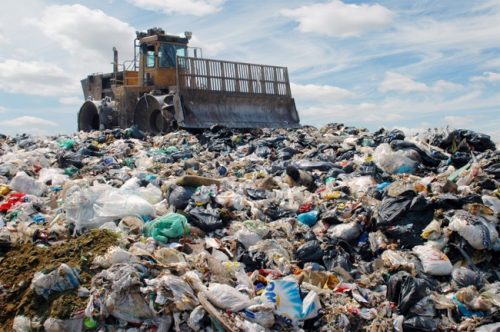Excavating a 21st-Century Waste Management Solution
Similar to the ghost-like greenhouse gases that bloom from car exhausts, factories, and power plants and then float into the atmosphere, the manufacturing of a cell phone also employs the concept of invisible waste. Yahya Jani, a postdoctoral fellow at Linnaeus University in Sweden, says that around 86 kilograms of invisible waste are involved in the production of a single phone weighing approximately 0.15 kilograms. After receiving his PhD in Chemical Engineering in 2006, Jani has received a second PhD, this time in Environmental Science, by taking a closer look at waste. His dissertation, published in March 2018, is the first to reimagine landfills as useful stocks of resources.
For two years, Jani collaborated with different universities in the Baltic Sea Region to gather data from two landfills—Högbytorp in Stockholm Sweden, which sees 700,000 tons of waste each year, and Torma in Tartu, Estonia. Jani found that over two-thirds of waste and two-fifths of waste at Högbytorp and Torma could be recovered, respectively. These fairly promising results at just two of the thousands of landfills across the planet indicate that countries can improve their hazardous, polluting waste management systems in unprecedented ways, potentially reversing the course of landfills currently maxed out on storage capacity.
Pukeberg, a glasswork dumping site in Nybro, Sweden, served as another test excavation site. Cadmium, lead, and arsenic were extracted from this site by the classic reduction-melting method, which involves melting the glass into a solution, and the transformed metals fall to the bottom of the glass solution. This process ultimately had a 99 percent success rate, demonstrating much promise for future trials with extraction.
Cadmium, lead, arsenic, and zinc were also isolated by various chelating agents, which bind to the elements and mobilize them into releasing from the surfaces of soil and glass of particle sizes less than two millimeters. Testing a selection of extraction methods was a critical supplement for the research because the ability to characterize the waste in landfills around the world is one of the first practical steps toward remediation. Though pleased with the results of these two extraction methods, Jani believes that there are many more extraction methods that need to be developed. He hopes to expand the body of science on cost-effective resource extraction techniques in order to propel these landfill reformations forward.
Jani’s work builds on the popular concept of a circular economy—in which the outputs of the system are recycled and then fed back into the system, as opposed to the wasteful, single-use nature of a linear economy, which would generally lead to the dumping of waste products—as a mechanism for embedding sustainability into development and government. It adds one more composite layer into the circle: the recycling, extraction, and reuse of waste. Once implemented, the latest component of waste management—the recovery of materials and energy—would combat scarcity of resources, as well as pollution leaching from hazardous waste materials. The technologies could even extend to cleaning up hazardous wastewater and harvesting nutrients. Particularly with such an abundance of electronic e-waste—collectively, the industry yields 750 million tons of it each year—but such a lack of the rare earth elements needed to create the number of electronics demanded, Jani envisions the replenishment of needed resources with what has already been used, or with what has been carelessly left behind in landfills.
When asked about the best approach to tackle waste management issues, Jani spoke of what he perceives to be the triple helix of change: society, decision makers, and academia. Uniting these three populations on a global scale and directing their focuses toward open dumping sites, which serve as troves of resources and opportunity rather than as piles of waste to be buried, can have profound impacts on the future of the Earth. The transition requires a vast accompanying shift in the global mindset toward considering waste as a secondary resource. Tackling climate change and other global environmental issues, however, will require unprecedented levels of collaboration and innovation; perhaps the next transformative climate solution will actually emerge from the world’s rubble.

